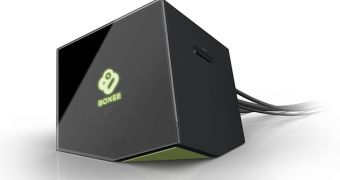With every passing day it becomes ever more clear that media streamers need to become less expensive for them to gain in popularity as much as manufacturers wish, Boxee CEO just stating during a video interview that the company is looking to subsidize its units’ price in order to better compete with Apple TV.
Although nothing is definite at this point, Avner Ronen, company founder and CEO, said that the company is looking at this option as the Boxee Box is "way too expensive," in its current form, to get mass market adoption.
Together with this idea, Mr. Ronen also detailed some other directions the company is exploring right now for their media streamer.
As Electronista reports, gaming is definitely one of the possibilities, although the company will take a different approach than that of OnLive as it would rely on the built-in web browser for running games, and not on proprietary apps.
A DVR function is yet another option that the company is considering, as many users have called for it in the company's official forums.
However, a TV tuner is out of the question for now as their development team is too small to undertake such a task.
Right now, the Boxee Box is priced at about $200 and, although D-Link said last year that its sales figures had greatly exceeded expectations, it still has to face some fierce competition from the likes of Apple TV and Roku, both solutions being available for $100 or lower.
The main reason is that the hardware used by the Boxee Box is a great deal more expensive than the chips found inside competing solutions.
The same problem was faced by Google (witch uses the same Intel CE4100 CPU) with its Google TV interactive platform, and the search giant decided to move its platform towards ARM based chips, according to the latest leaks.
The Boxee Box was initially designed to use Nvidia's Tegra 2 SoC, but the company decided, at the last minute, to go with an Intel CPU.

 14 DAY TRIAL //
14 DAY TRIAL //